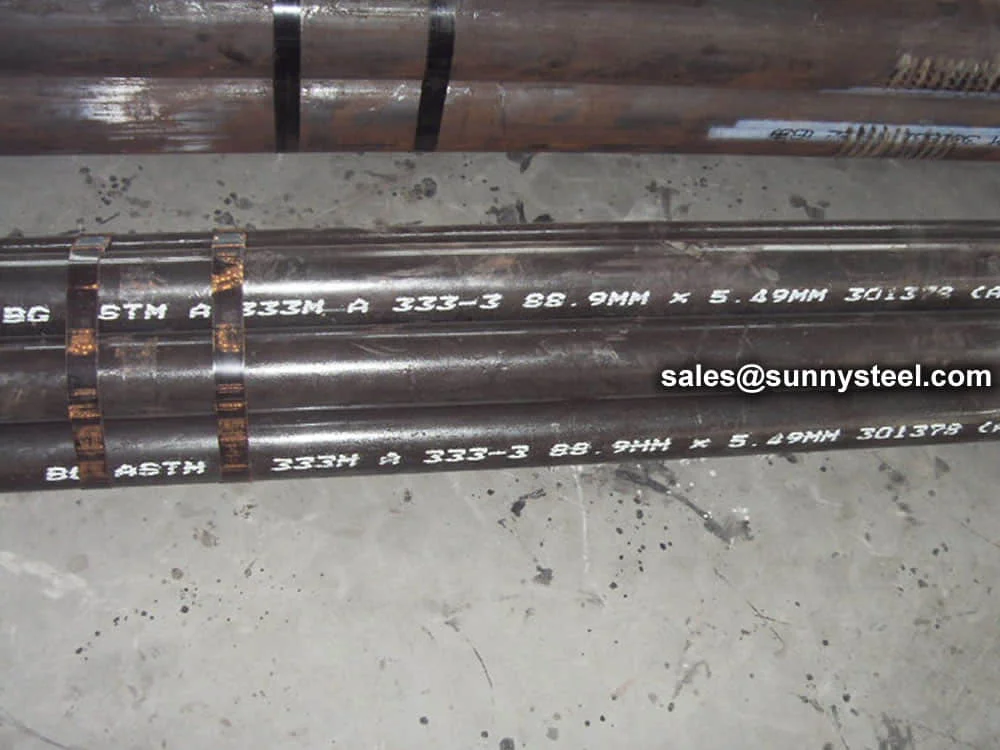
Nickel-alloyed Carbon Steel Pipe For Cryogenic And Sub-zero Pressure Systems
Astm a333 grade 3 seamless pipe is ideal for low-temperature environments, offering superior notch toughness and weldability for cryogenic pipelines and lng systems.
Nickel-alloyed Carbon Steel Pipe For Cryogenic And Sub-zero Pressure Systems
Astm a333 grade 3 seamless pipe is ideal for low-temperature environments, offering superior notch toughness and weldability for cryogenic pipelines and lng systems.
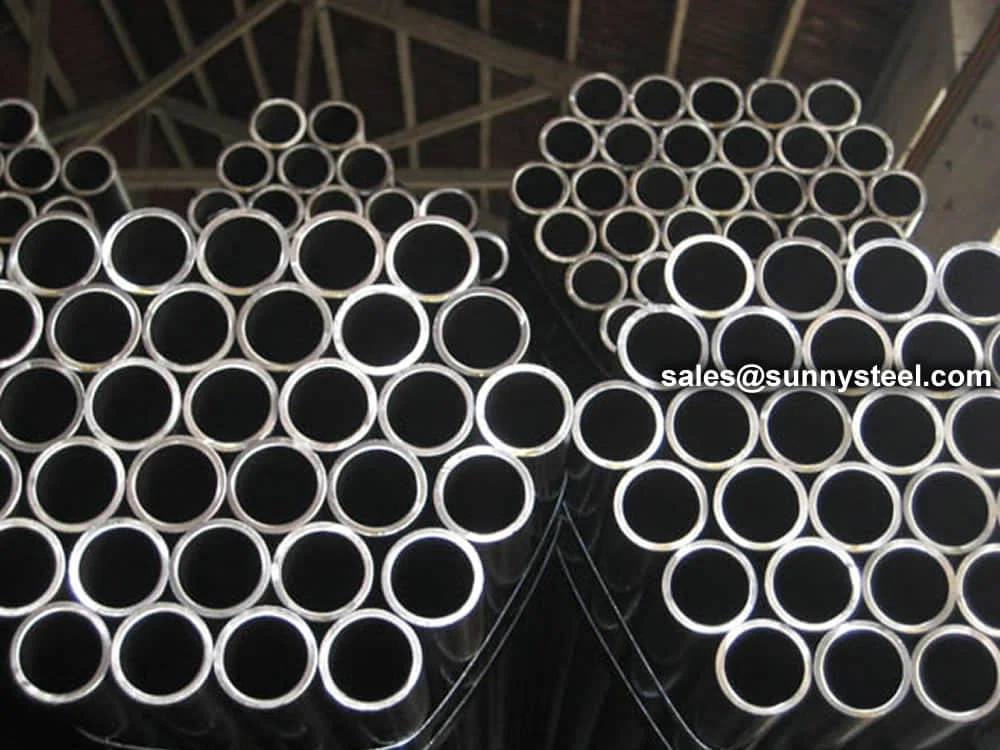
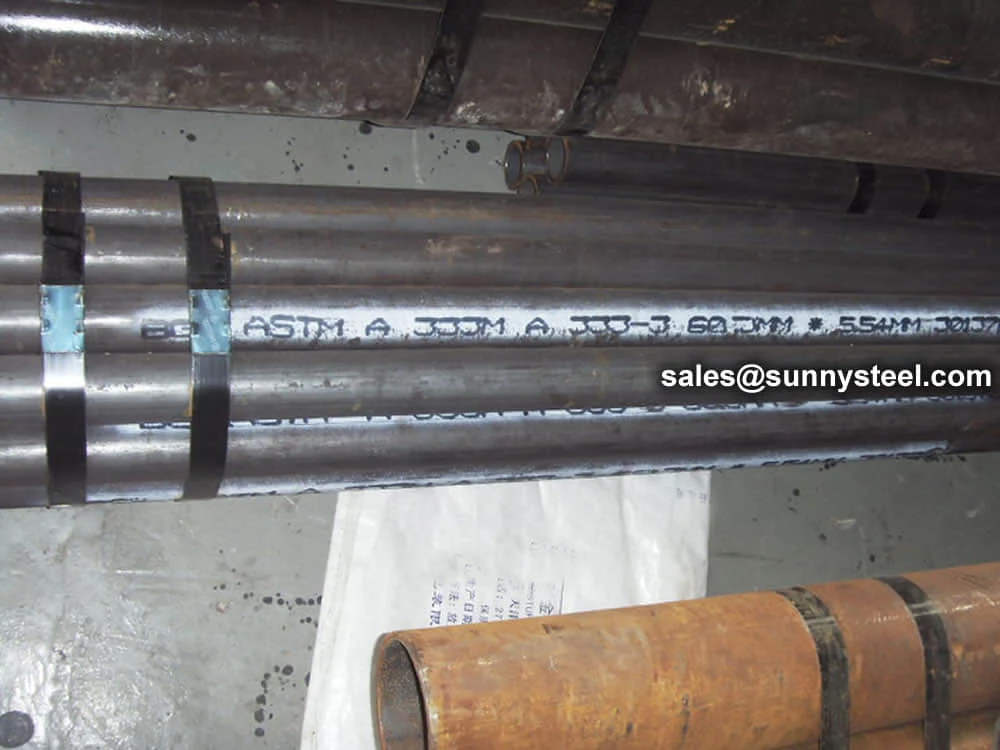
ASTM A333 Grade 3 seamless pipe is a carbon steel pipe alloyed with nickel for enhanced toughness at cryogenic and sub-zero temperatures, typically tested at -100°C. This pipe grade is used extensively in low-temperature pressure systems, including LNG terminals, gas processing units, cryogenic storage, and power plants.
The alloying of nickel improves fracture resistance and weldability in low-temperature service conditions. These pipes are normalized or quenched and tempered to enhance grain refinement, ensuring ductility and structural integrity.
Grade 3 pipe meets the impact testing criteria per ASTM A333 standards and is suitable for applications that demand notch toughness under extreme cold. The pipe’s composition ensures reliable performance, whether in straight pipe runs or formed elbows and fittings.
Available in 1/2” to 24” OD, with wall thicknesses from SCH 10 to XXS, and in lengths up to 12 meters, these pipes can be ordered in plain, beveled, or threaded ends, with additional options like 3LPE coating or varnished surfaces.
Common applications include LNG pipelines, ammonia storage, oil refineries in cold climates, and process equipment in chemical plants. These seamless pipes are known for consistent wall thickness, dimensional precision, and high mechanical strength at low temperatures.
| Element | Composition (%) |
|---|---|
| Carbon (C) | ≤ 0.19 |
| Manganese (Mn) | 0.31 – 0.64 |
| Phosphorus (P) | ≤ 0.025 |
| Sulfur (S) | ≤ 0.025 |
| Silicon (Si) | 0.18 – 0.37 |
| Nickel (Ni) | 0.47 – 0.98 |
| Property | Value |
|---|---|
| Tensile Strength | ≥ 450 MPa |
| Yield Strength | ≥ 240 MPa |
| Elongation | ≥ 30% |
| Impact Toughness | ≥ 27 J @ -100°C |
| Hardness | ≤ 241 HBW |
Grade 3 has 3.18–3.82% nickel for toughness at -150°F (-101°C) and higher strength (450/240 MPa) vs. Grade 1 (380/205 MPa, -50°F/-45°C). Grade 3 is better for extreme cryogenic applications.
Grade 3 offers higher strength (450/240 MPa) and better toughness at -150°F (-101°C) due to nickel, vs. Grade 6 (415/240 MPa, -50°F/-45°C). Grade 3 suits extreme low-temperature needs.
A106 Grade B is for high-temperature service (up to 750°F/400°C) with similar strength (415/240 MPa) but lacks Grade 3’s low-temperature toughness, impact-tested at -150°F (-101°C).
A335 P91 is an alloy steel for high-temperature service (up to 650°C) with high strength (585/415 MPa). Grade 3 is nickel-alloyed for low-temperature service (-150°F/-101°C) with lower strength (450/240 MPa).
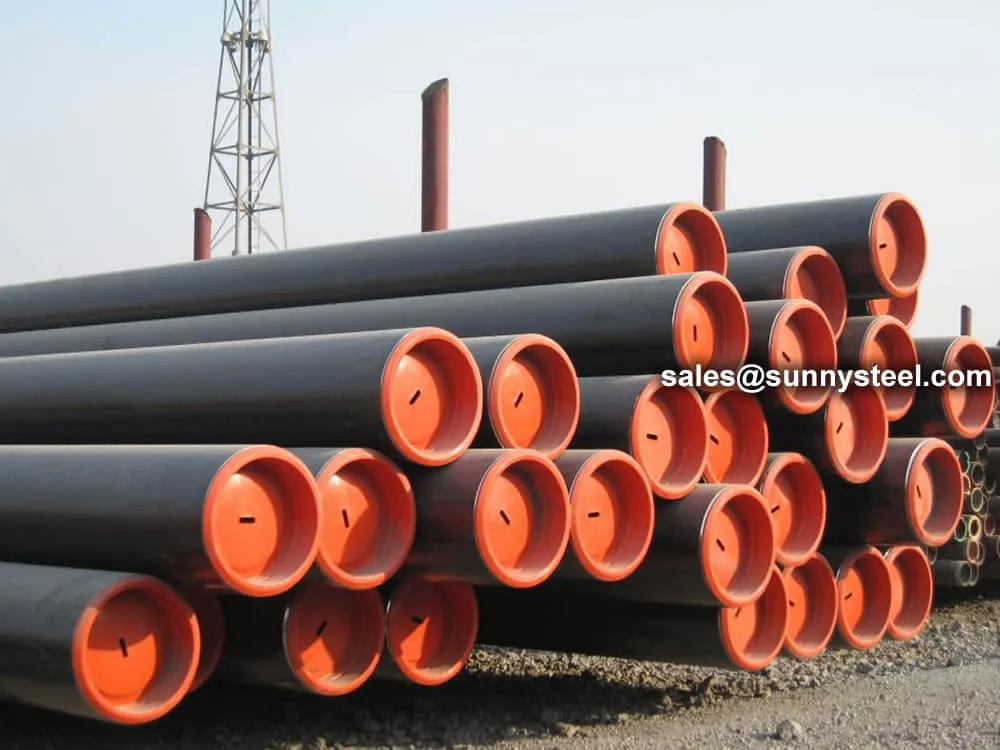
ASTM A333
Low temperature pipe refers to pipes specifically designed to withstand and operate effectively in environments with low temperatures, typically below 0°C (32°F).
These pipes are often used in industries such as oil and gas, petrochemicals, and refrigeration, where fluids need to be transported or stored at low temperatures. They are constructed from materials that can maintain their mechanical properties and structural integrity even in extremely cold conditions, ensuring the safe and efficient transportation of fluids. Additionally, low temperature pipes are insulated to prevent heat transfer and maintain the desired temperature of the fluid being transported.
Compared with austenitic stainless steel and duplex stainless steel, there are many comprehensive advantages of ferrite alloy steels for low temperature service, such as higher strength, better rigidity and lower expansion coefificient. There is not only better stability but aslo higher heat transfer efficiency. Tube & pipe for low-temperature service can be widely used in low temperature engineering. ASTM/ASME A/SA-333 Grades allow for cold temperature service to minus 150 degrees F. Material is always provided in the normalized condition at a minimum and Charpy Impact tested to a specific temperature range to assure compliance with the required service temperature.
Exceptional performance at temperatures down to -45°C with superior notch toughness and impact resistance.
Fine-grain structure with uniform carbide dispersion prevents brittle fracture in cryogenic conditions.
Economical alternative to exotic materials while providing reliable low-temperature performance.
Good weldability using conventional processes with minimal post-weld heat treatment requirements.
| Grade | C | Si | Mn | P | S | Cr | Ni | Cu | Mo | V | Al |
|---|---|---|---|---|---|---|---|---|---|---|---|
| Grade 1 | ≤0.30 | – | 0.40–1.06 | ≤0.025 | ≤0.025 | – | – | – | – | – | – |
| Grade 3 | ≤0.19 | 0.18–0.37 | 0.31–0.64 | ≤0.025 | ≤0.025 | – | 3.18–3.82 | – | – | – | – |
| Grade 4 | ≤0.12 | 0.18–0.37 | 0.50–1.05 | ≤0.025 | ≤0.025 | 0.44–1.01 | 0.47–0.98 | 0.40–0.75 | – | – | 0.04–0.30 |
| Grade 6 | ≤0.30 | ≥0.10 | 0.29–1.06 | ≤0.025 | ≤0.025 | – | – | – | – | – | – |
| Grade 7 | ≤0.19 | 0.13–0.32 | ≤0.90 | ≤0.025 | ≤0.025 | – | 2.03–2.57 | – | – | – | – |
| Grade 8 | ≤0.13 | 0.13–0.32 | ≤0.90 | ≤0.025 | ≤0.025 | – | 8.40–9.60 | – | – | – | – |
| Grade 9 | ≤0.20 | – | 0.40–1.06 | ≤0.025 | ≤0.025 | – | 1.60–2.24 | 0.75–1.25 | – | – | – |
| Grade 10 | ≤0.20 | 0.10–0.35 | 1.15–1.50 | ≤0.03 | ≤0.015 | ≤0.15 | ≤0.25 | ≤0.015 | ≤0.50 | ≤0.12 | ≤0.06 |
| Grade 11 | ≤0.10 | ≤0.35 | ≤0.6 | ≤0.025 | ≤0.025 | ≤0.50 | 35.0–37.0 | – | ≤0.50 | – | – |
* For Grade 1 and 6, each reduction of 0.01% C below 0.30% allows an increase of 0.05% Mn above 1.06%, up to
1.35%.
* For Grade 6, the columbium limit may increase to 0.05% (heat analysis) and 0.06% (product analysis).
* Generally, carbon equivalent (C.E.) = [C + Mn/6 + (Cr + Mo + V)/5 + (Ni + Cu)/15] shall not exceed 0.43% by
heat analysis.
| Grade | Tensile Strength (MPa) |
Yield Point (MPa) |
Elongation Y (%) | Elongation X (%) |
|---|---|---|---|---|
| ASTM A333 Grade 1 | ≥380 | ≥205 | ≥35 | ≥25 |
| ASTM A333 Grade 3 | ≥450 | ≥240 | ≥30 | ≥20 |
| ASTM A333 Grade 4 | ≥415 | ≥240 | ≥30 | ≥16.5 |
| ASTM A333 Grade 6 | ≥415 | ≥240 | ≥30 | ≥16.5 |
| ASTM A333 Grade 7 | ≥450 | ≥240 | ≥30 | ≥22 |
| ASTM A333 Gr. 8 | ≥690 | ≥515 | ≥22 | – |
| ASTM A333 Grade 9 | ≥435 | ≥315 | ≥28 | – |
| ASTM A333 Grade 10 | ≥550 | ≥450 | ≥22 | – |
| ASTM A333 Grade 11 | ≥450 | ≥240 | ≥18 | – |
* Elongation values are based on standard round 2-inch or 50 mm (or 4D) specimens.
* Elongation of Grade 11 applies to all wall thicknesses and small sizes tested in full section.
| No. | Order No. | O.D. (mm) | W.T. (mm) | Length (m) |
|---|---|---|---|---|
| 1 | A333 Gr.6 / A333 Gr.6 + X42NS | 10–127 | 1–20 | 6–12.0 |
| 42–114.3 | 3.5–6 | 6–12.2 | ||
| 42–114.3 | 6–12 | 6–12.2 | ||
| 114.3–180 | 3.8–8 | 6–12.2 | ||
| 114.3–180 | 8–22 | 6–12.2 | ||
| 68–180 | 10–14 | 6–12.2 | ||
| 69–254 | 14–55 | 6–12.2 | ||
| 140–340 | 6–8 | 6–12.2 | ||
| 140–368 | 8–42 | 6–12.2 | ||
| 318–720 | 14–50 | 4–12.5 | ||
| 2 | A333 Gr.6 + X52QS | 42–114.3 | 3.5–12 | 6–12.2 |
| 114.3–180 | 3.8–22 | 6–12.2 | ||
| 68–254 | 10–40 | 6–12.2 | ||
| 140–368 | 6–40 | 6–12.2 | ||
| 318–720 | 14–40 | 4–12.5 | ||
| 140–368 | 6–25 | 6–12.2 | ||
| 318–720 | 14–25 | 4–12.5 | ||
| 3 | 16MnDG | 10–127 | 1–20 | 6–12.0 |
| 42–114.3 | 3.5–12 | 6–12.2 | ||
| 114.3–180 | 3.8–22 | 6–12.2 | ||
| 68–254 | 10–55 | 6–12.2 | ||
| 140–368 | 6–42 | 6–12.2 | ||
| 318–720 | 14–120 | 4–12.5 |
| Grade | Strike Test Temperature (℉) | Strike Test Temperature (℃) |
|---|---|---|
| ASTM A333 Grade 1 | -50 | -45 |
| ASTM A333 Grade 3 | -150 | -100 |
| ASTM A333 Grade 4 | -150 | -100 |
| ASTM A333 Grade 6 | -50 | -45 |
| ASTM A333 Grade 7 | -100 | -75 |
| ASTM A333 Grade 8 | -320 | -195 |
| ASTM A333 Grade 9 | -100 | -75 |
| ASTM A333 Grade 10 | -75 | -60 |
| Parameter | Range / Options |
|---|---|
| Size Range | 1/4" to 42" O.D. |
| Wall Thickness | SCH 10, SCH 20, SCH 40, SCH STD, SCH 80, SCH XS, SCH 160, SCH XXS |
| Length Options | Single Random, Double Random, 20 ft, 40 ft |
| End Types | Plain End, Beveled End |
| Manufacturing | Seamless, Welded (no filler metal) |
| Grade | Minimum Service Temperature | Impact Test Temperature | Typical Applications |
|---|---|---|---|
| Grade 1 | -50°F (-45°C) | -50°F | General low-temperature service |
| Grade 3 | -150°F (-101°C) | -150°F | Cryogenic applications with 3.5% Ni |
| Grade 6 | -50°F (-45°C) | -50°F | Most common grade for power generation |
| Grade 8 | -320°F (-196°C) | -320°F | Ultra-low temperature applications |
Precise control of chemical composition using electric arc furnaces with advanced ladle metallurgy techniques. Vacuum degassing reduces hydrogen content and eliminates inclusions.
Seamless pipes manufactured using hot piercing and rolling. Welded pipes produced using ERW or SAW processes with strict welding parameter controls.
Controlled heat treatment including normalizing at 815°C (1500°F), quench and temper, or stress relief to achieve optimal microstructure and properties.
Comprehensive testing including chemical analysis, mechanical testing, Charpy V-notch impact testing, hydrostatic testing, and non-destructive examination.

ASTM A333 Grade 3 Seamless Pipe is widely used in industries requiring excellent high-temperature, high-pressure, and corrosion-resistant performance.
Used in boilers, superheaters, and steam lines in thermal and nuclear power plants.
Ideal for hydrocarbon processing, ethylene cracking, and heat exchanger units.
Used in LNG pipelines, storage tanks, and vaporization equipment for cold media.
Ensures excellent thermal conductivity and corrosion resistance in cyclic operations.
Handles high-pressure oil and gas in extraction, refining, and transportation systems.
Resists acidic and corrosive environments in reactors, scrubbers, and distillation units.
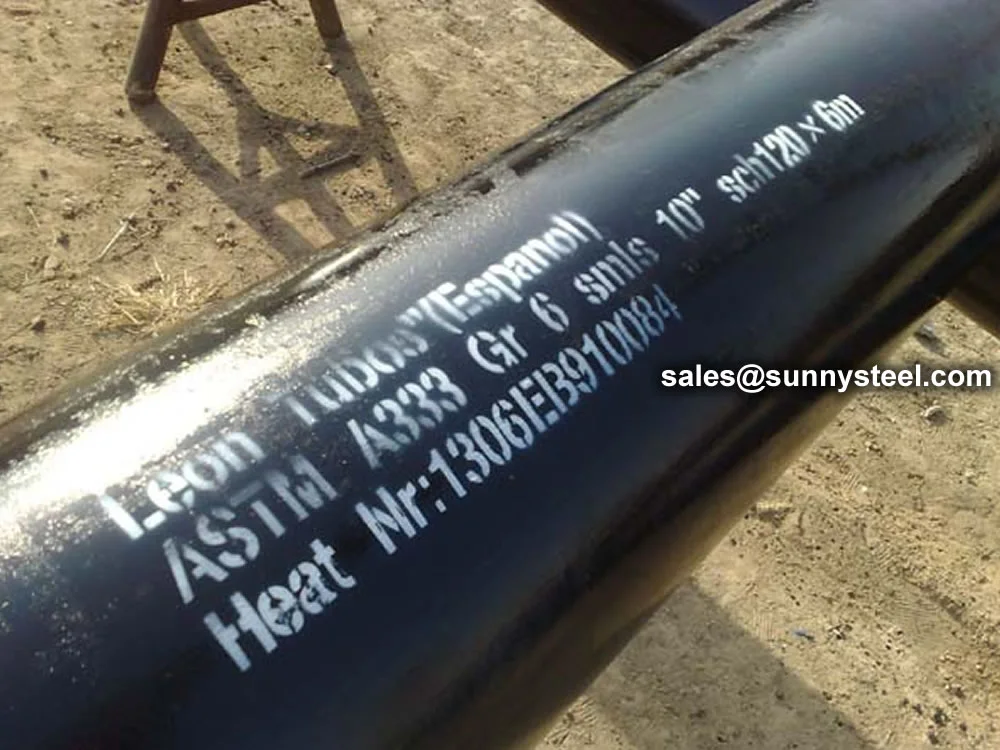
Astm a333 grade 6 pipe offers excellent toughness ...
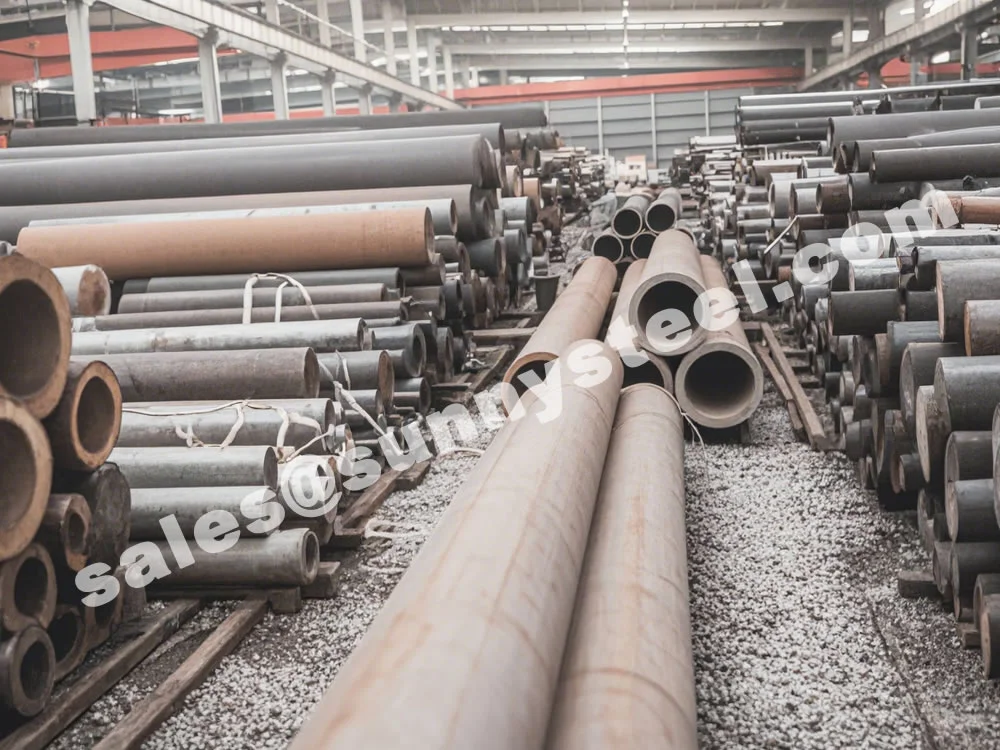
16mndg seamless steel pipe offers excellent low-te...